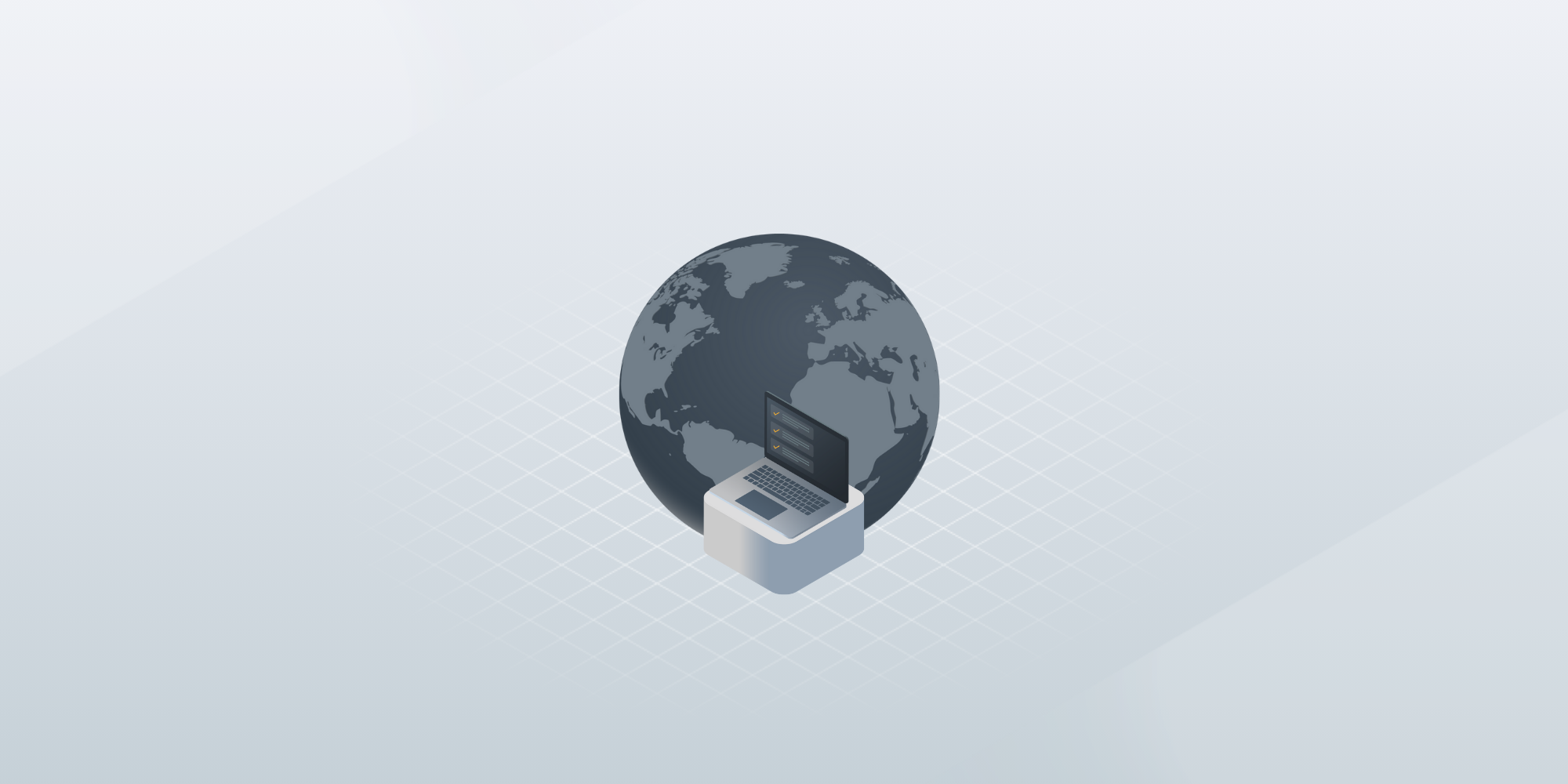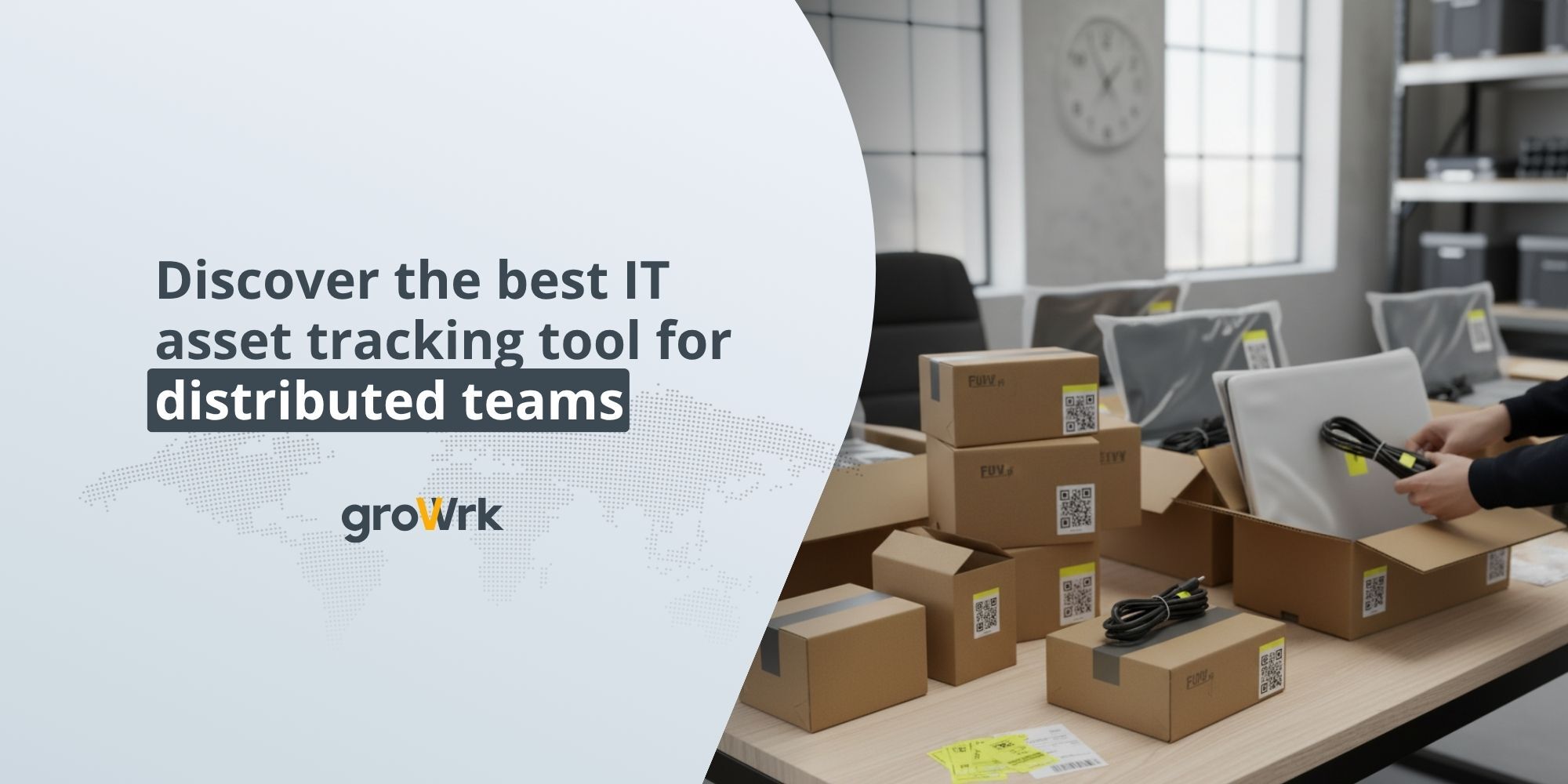How RFID Tracking Solutions Enhance Asset Management
 GroWrk Team
GroWrk Team
Want to improve your IT asset management? Radio Frequency Identification (RFID) IT asset tracking provides real-time visibility and automates data collection. This technology reduces manual errors and boosts efficiency. Learn how RFID can transform your IT asset tracking in this article.
Key takeaways
-
RFID technology enhances IT asset inventory management by providing real-time tracking, reducing manual errors, and improving operational efficiency.
-
The global RFID asset tracking market is expected to grow significantly, reaching approximately $39.3 billion by 2025, driven by its benefits across various industries.
-
Implementing an RFID system involves careful equipment selection, integration with existing systems, and strategic deployment of appropriate RFID tags to maximize the benefits of enhanced IT asset visibility and security.
Introduction
RFID asset tracking solutions technology is a game-changer for businesses looking to improve the accuracy and security of their inventory management processes. Attaching a tag to an asset enables real-time tracking and data collection, which is readable by RFID readers. This reduces the need for manual processes and the likelihood of human error, enhancing inventory management efficiency and reliability.
The adoption of RFID tracking solutions has not only increased inventory accuracy but also significantly improved operational efficiency. Traditional methods of tracking assets, such as spreadsheets, are prone to errors and can be time-consuming. On the other hand, RFID systems provide real-time data that enables businesses to make informed decisions quickly, thereby improving overall productivity.
Moreover, the global RFID asset-tracking software market is on an upward trajectory and is projected to reach approximately $39.3 billion by 2025. This growth is driven by the increasing recognition of RFID’s benefits in various industries, from manufacturing and healthcare to logistics and retail. As more businesses adopt RFID technology, accurate, real-time asset tracking advantages become even more apparent.
Understanding RFID technology in IT asset tracking
-1.png?width=600&height=300&name=In-blog%20image%20template%20(6)-1.png)
RFID asset tracking solutions, also known as radio frequency identification tags, manage physical assets through RFID technology. They incorporate hardware components such as asset tags, readers, tracking software, and backend RFID asset tracking software systems. These components provide a robust inventory management system that enhances asset tracking and monitoring.
RFID tags containing a microchip and an RFID antenna are attached to assets to store information. These multiple RFID tags can be active, passive, or semi-passive, each type offering different capabilities and applications. An RFID tag can be read by fixed RFID readers that emit radio waves to communicate with the radio frequency identification tags, capturing the data stored on them whenever they come within range. Middleware processes this data, facilitating inventory management and analysis and providing real-time asset visibility.
The RFID system significantly improves asset tracking by providing precise, real-time data on asset location and status. This reduces the need for manual tracking methods, which are often error-prone and time-consuming. Additionally, RFID technology enhances inventory accuracy and operational efficiency, making it an invaluable tool for modern asset management.
Types of RFID tags for IT assets
RFID tags, the cornerstone of asset tracking systems, come in three primary types: Active, Passive, and Semi-Passive. Each tag type offers unique features and benefits suitable for various IT asset management applications.
Active RFID tags
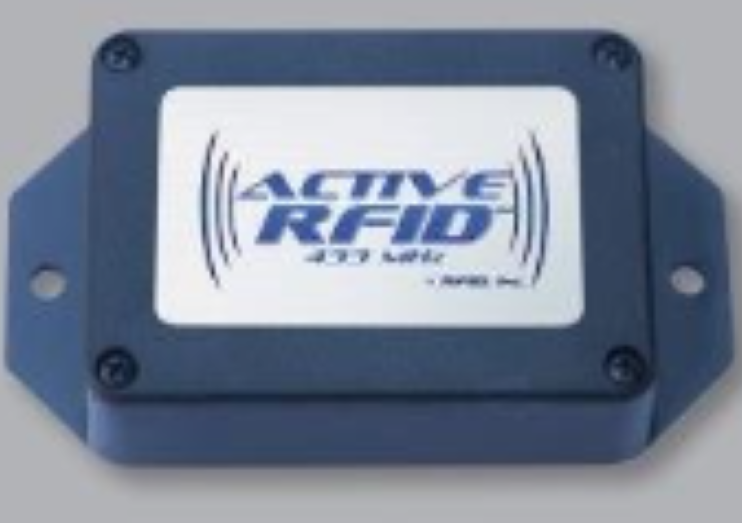
Active RFID asset tracking tags are equipped with their own power source, typically a battery, which allows them to transmit signals over distances of up to 600 feet. This makes them ideal for real-time tracking of large assets like vehicles, cargo containers, and machinery. They function in harsh environments, including wet conditions and extreme temperatures, ensuring reliable performance.
Active RFID asset tracking solutions are classified into two main types: beacons and transponders.
-
Beacons continuously transmit signals, enabling constant monitoring of assets.
-
Transponders conserve battery life by transmitting signals only when prompted by an RFID reader
The proactive communication and real-time tracking capabilities of active RFID tags make them ideal for managing large and valuable assets.
Passive RFID tags
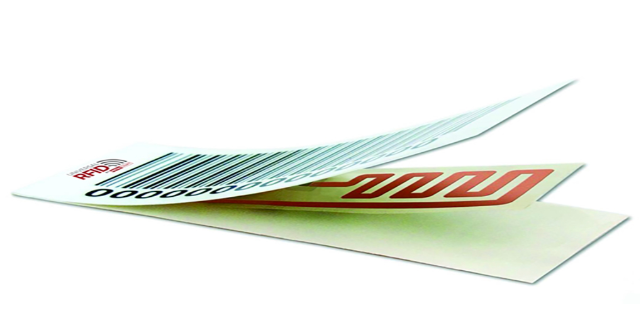
Passive RFID asset tracking tags are cost-effective and flexible. Unlike active tags, passive RFID tags do not have an internal power source and rely on the energy emitted by RFID readers to power their microchips and transmit data. This makes them significantly cheaper, with prices starting at $0.08 per tag.
Despite a shorter read range compared to active tags, passive RFID asset tracking solutions are still highly effective for many applications. They are commonly used for inventory management, library asset tracking, and retail, where a shorter range is not a limitation.
Semi-passive RFID tags
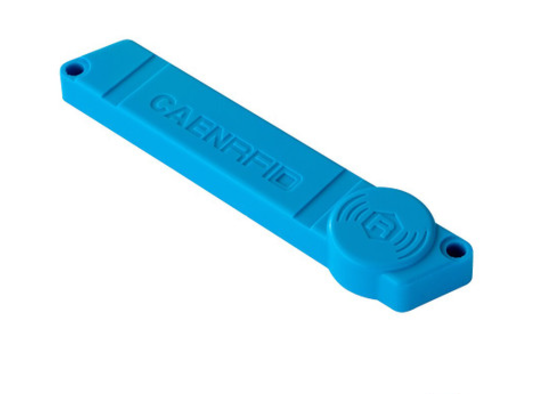
Semi-passive RFID asset tracking tags use a battery for power but still rely on an RFID reader’s signal for data transmission. This hybrid approach combines the benefits of both active and passive tags, offering improved data transmission range and efficiency while keeping costs relatively low.
These tags are helpful where enhanced performance is needed without the higher costs of active tags. They provide a balanced solution for various tracking needs, making semi-passive RFID tags a versatile option for businesses seeking to optimize their asset-tracking systems.
How does RFID enhance IT asset management?

RFID technology enhances IT asset management by improving visibility into asset locations, enabling more frequent and accurate updates. This real-time data allows businesses to make informed decisions, enhancing operational efficiency. Reducing reliance on manual tracking methods, RFID systems eliminate human errors and misplacements, resulting in more accurate inventory data.
Monitoring and recording real-time asset movements enhances security, preventing theft and unauthorized access. RFID systems track multiple items simultaneously, speeding up inventory management and reducing the time spent on manual checks. This efficiency translates into significant cost savings and improved asset utilization.
RFID technology also supports automated processes that enhance productivity and streamline workflows. RFID-enabled systems can automate IT equipment check-in/check-out processes, ensuring assets are always accounted for and reducing the risk of IT equipment loss or theft. This results in a more efficient and secure asset management system, benefiting businesses in numerous ways.
Key benefits of RFID asset tracking

Implementing RFID technology in IT asset tracking offers several key benefits that streamline operations and enhance efficiency. Benefits include increased efficiency through automation, enhanced security through real-time monitoring, and significant cost savings by reducing operational and labor costs.
RFID technology provides accurate, real-time data, enabling better decision-making and improved asset management.
Increased efficiency
RFID tracking systems automate inventory processes, reducing the need for manual labor and significantly cutting down the time required for asset audits. Businesses can streamline inventory management by tracking multiple assets simultaneously, increasing operational efficiency. Automation reduces labor costs and minimizes the risk of human error, ensuring more accurate inventory data.
Moreover, RFID technology allows tracking reusable assets, such as textiles and hardware, throughout their lifecycle. This enhances asset utilization and ensures effective resource management, contributing to overall efficiency and cost savings.
Enhanced security
A significant advantage of RFID technology is enhanced asset security. Real-time tracking allows businesses to monitor assets continuously, significantly reducing the chances of loss or theft. Continuous monitoring deters unauthorized access and helps ensure valuable assets are always accounted for.
RFID systems can also incorporate additional security features, such as access control and alerts for unauthorized access attempts. These features offer unparalleled visibility into asset movements, enabling quick responses to security threats and maintaining a secure asset management system with RFID tracking systems.
Cost savings
Implementing RFID technology can result in substantial cost savings for businesses. Automating inventory management and reducing manual checks lower operational and labor costs. Real-time asset tracking helps prevent loss and theft, contributing to long-term cost savings.
RFID systems can yield up to 200% return on investment (ROI) for many businesses, particularly manufacturing, logistics, and retail. This high ROI is a testament to the cost-effectiveness and efficiency of RFID technology, making it a valuable investment for businesses looking to optimize their asset management processes.
Implementing an RFID asset tracking system

Implementing an RFID asset tracking system involves several steps, each crucial for ensuring the system’s success. From selecting the right equipment to integrating with existing systems and deploying tags, each stage requires careful planning and execution. Despite challenges like initial investment costs, potential interference from metals or liquids, and the need for staff training, the benefits of RFID technology far outweigh these obstacles.
Choosing the right RFID equipment
Choosing the appropriate RFID equipment is critical to the success of an asset tracking system. The choice of RFID tags and readers depends on the business’s specific needs and desired outcomes. Modern RFID tags are designed to function in various environments, including wet conditions, metal assets, and extreme temperatures. Businesses must consider these environmental factors to ensure optimal performance.
Solutions can be cost-effective options like EZOfficeInventory for large-scale implementations. Each solution offers different features and capabilities, so businesses should evaluate their requirements before selecting asset-tracking software.
Integration with existing systems
Integrating RFID systems with existing asset management solutions streamlines inventory updates and improves overall efficiency. Solutions like Wasp Barcode AssetCloud integrate seamlessly with ERP and CRM platforms, enabling smooth data flow and enhanced visibility. This integration allows businesses to leverage existing infrastructure while benefiting from advanced RFID capabilities.
Seamless data flow from integrated systems provides real-time visibility into asset locations and status, improving decision-making and efficiency. This is especially valuable for businesses managing assets across multiple locations, providing a unified view of all assets, regardless of physical location.
Setting up and deploying RFID tags
Smartphones or tablets can be used to set up an RFID asset tracking system initially, providing a convenient and cost-effective start. This approach allows businesses to test the system and adjust before implementing a more complex solution.
Deploying a full-scale RFID system involves strategically placing readers and antennas for optimal coverage and performance. Businesses must ensure the tags are correctly attached to assets and the system is configured for accurate, reliable data.
With careful planning and execution, businesses can achieve seamless asset tracking and enjoy RFID technology’s numerous benefits.
Real-world examples of RFID asset tracking
-1.png?width=600&height=300&name=In-blog%20image%20template%20(7)-1.png)
Real-world examples of RFID asset tracking vividly illustrate the technology's tangible advantages in various environments and industries.
Global Logistics networks
In global logistics networks, RFID technology is employed to streamline the movement of goods, ensuring that shipments are tracked accurately from origin to destination. This enhances the efficiency of logistics operations and significantly reduces the risk of lost or misplaced items, thereby improving overall supply chain reliability.
Supply chain optimization
In supply chain optimization, RFID solutions are integrated to provide real-time data on inventory levels. This enables businesses to make informed decisions about stock replenishment and distribution. The result is a more agile and responsive supply chain capable of adapting to fluctuations in demand with minimal delay.
Manufacturing
In manufacturing, RFID monitors the production process, ensuring that each component is accounted for and the final product meets quality standards.
Healthcare
In healthcare, RFID tracks medical equipment and supplies, ensuring that critical items are available when needed and reducing the time spent on manual inventory checks.
These implementations have resulted in significant improvements in operational efficiency, enhanced security through better asset tracking, and substantial cost savings by minimizing waste and optimizing resource allocation.
GroWrk's global IT asset logistics platform eliminates the need for RFID tracking

GroWrk efficiently manages IT assets across more than 150 countries without RFID technology. Their logistics network has provided thousands of devices for remote workers worldwide. Their platform enables businesses to manage device procurement, deployment, retrieval, and disposal effectively, simplifying complex IT operations and ensuring that equipment is always available where and when needed.
By utilizing serial numbers, MDM software, and Apple Business Manager, GroWrk enhances operational efficiency and simplifies visibility into the status and location of IT assets. Companies can reduce the administrative burden and ensure that assets are always accounted for.
GroWrk’s commitment to simplifying complex IT operations and ensuring seamless worldwide equipment management makes it a valuable partner for businesses looking to optimize their asset management strategies.
Overcoming challenges in RFID asset tracking
Implementing RFID asset tracking systems can revolutionize asset management by providing real-time data and enhanced security. However, businesses may face several challenges when adopting this technology. Addressing these challenges effectively is crucial to fully leverage the benefits of RFID systems and achieve seamless asset tracking.
Security concerns
One significant concern is the potential vulnerability of RFID systems to hacking, as RFID tags can be cloned or duplicated. To mitigate this risk, businesses can use secured RFID channels and encryption to enhance the protection of sensitive asset information.
Interference issues
Another challenge is the interference caused by metals or liquids, which can affect the performance of RFID readers and tags. Businesses must carefully plan the placement of RFID readers and antennas to minimize these issues and ensure optimal system performance.
Staff training
Additionally, staff training is crucial to ensure employees are familiar with the technology and can effectively manage and troubleshoot the system. Proper training helps in maximizing the efficiency and reliability of the RFID system.
Addressing these challenges and implementing best practices can help businesses fully leverage the benefits of RFID technology and achieve seamless asset tracking. RFID systems can provide reliable and efficient asset management solutions with careful planning, proper training, and advanced security measures.
Wrapping up
RFID technology has the potential to transform IT asset management by providing real-time visibility, enhancing security, and reducing operational costs. Tracking assets accurately and efficiently enables businesses to optimize inventory management processes, improve asset utilization, and achieve significant cost savings. With various RFID tags, companies can select the solutions that best meet their specific needs and requirements.
Although implementing RFID technology can present some challenges, the benefits far outweigh the initial obstacles. By carefully selecting the right equipment, integrating RFID systems with existing solutions, and ensuring proper deployment and training, businesses can achieve efficient asset tracking and enjoy the numerous advantages of this innovative technology. The future of IT asset management is bright, and RFID technology is at the forefront of this transformation.
Streamline your IT asset management with GroWrk's advanced global platform. GroWrk provides real-time visibility, enhanced security, and seamless lifecycle management for your IT assets—anywhere in the world.
Schedule a demo today and discover how GroWrk can transform your IT operations!
Frequently asked questions
What are some innovative uses of RFID asset tracking?
RFID asset tracking is innovatively utilized in supply chain management and healthcare settings. For example, it was used to monitor hospital medical equipment during the COVID-19 pandemic. Its deployment enhances operational efficiency and improves asset visibility.
What significant historical event first utilized RFID tracking technology?
The first significant historical event to utilize RFID tracking technology was the Second World War, specifically for tracking and identifying enemy aircraft. This early use laid the groundwork for the development of modern RFID technology.
What is the estimated global market share for asset tracking by 2025?
The global asset tracking market share is projected to reach $36.3 billion by 2025, indicating significant growth in this sector. This highlights the increasing importance of tracking assets in various industries.
What are the different types of RFID tags?
The three main types of RFID tags are active, passive, and semi-passive. Each type serves different applications based on its power sources and communication capabilities.
How much can manufacturing, logistics, and retail businesses achieve as a return on investment (ROI) with RFID tracking?
RFID tracking can yield an ROI of up to 200% for businesses in the manufacturing, logistics, and retail sectors. This significant return highlights the value of implementing such technology for efficiency and cost savings.


